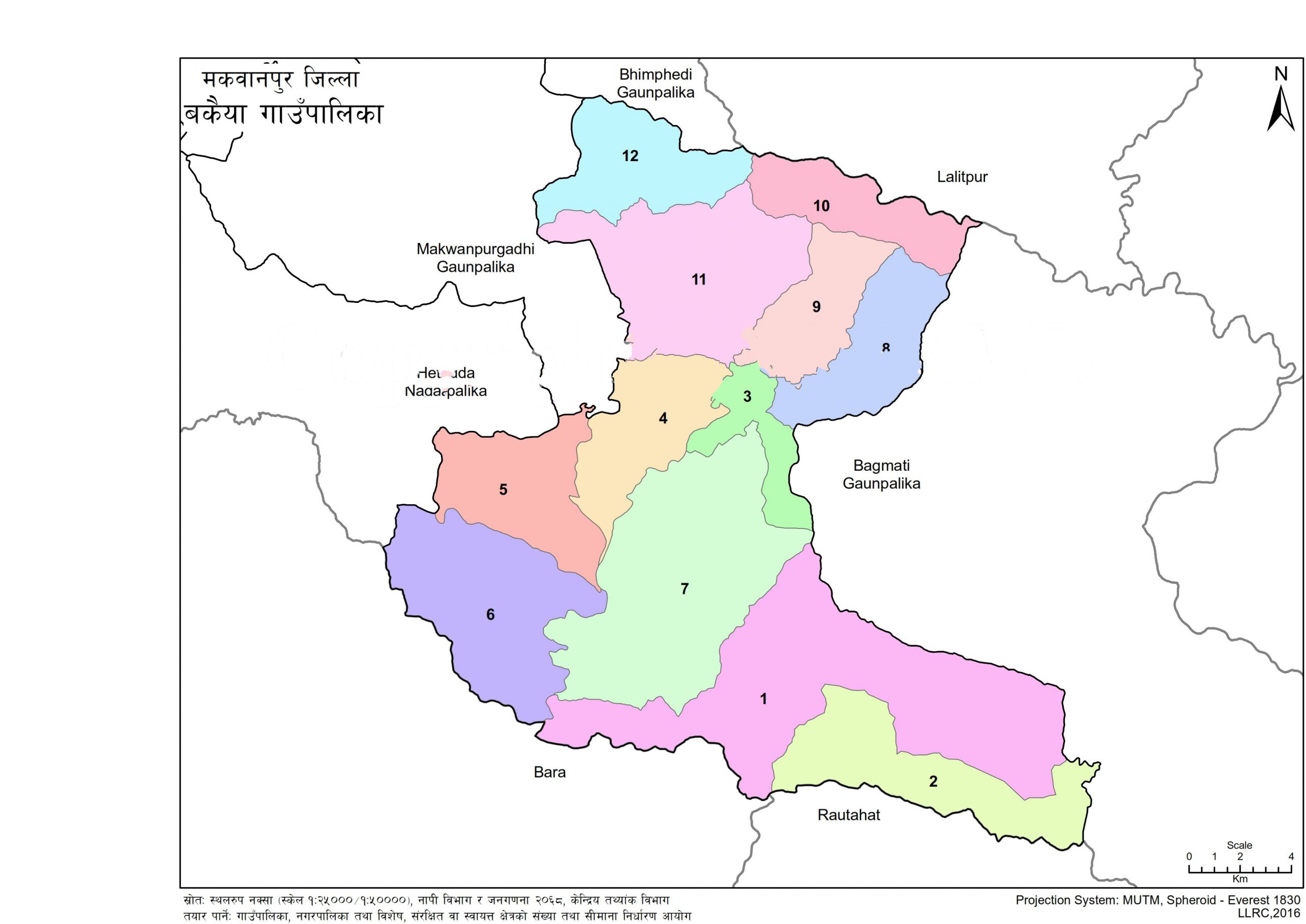
Wardwise Population and Households
As per 2011 population census, Bakaiya Rural Municipality had total 39,620 population with 19,129 males and 20,491 females. Out of total wards, ward number 4 had the largest population 5,028, while ward number 12 had least number of population with 5,028.
With respect to number of households, Bakaiya Rural Municipality had total 7,538 households. The ward number 4 had most households with total 1,028, while ward number 12 had least number of households with total 353 number of households.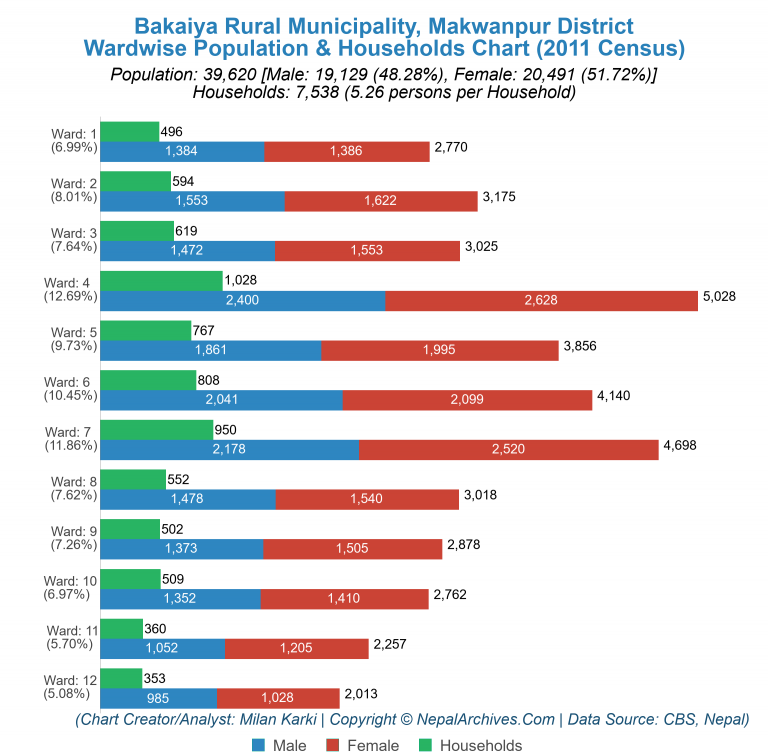
As illustrated in the chart, the ratio of male to female population was 0.93, which indicates that Bakaiya Rural Municipality had 7 percent lower males as compared to the females. Same as, the population to household ratio was 5.26, which means that in average 5.26 family members lived in each household.
Absentee Population
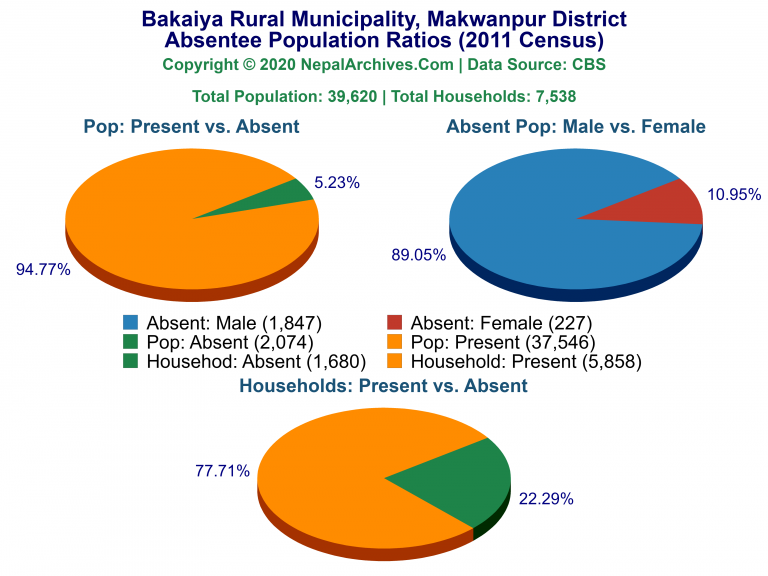
As illustrated in the charts, the ratio of absentee population was 18.10, while male to female absentee population ratio was 8.14. Same as, the household ratio of present vs. absent population was 3.49.
Population by Age Group
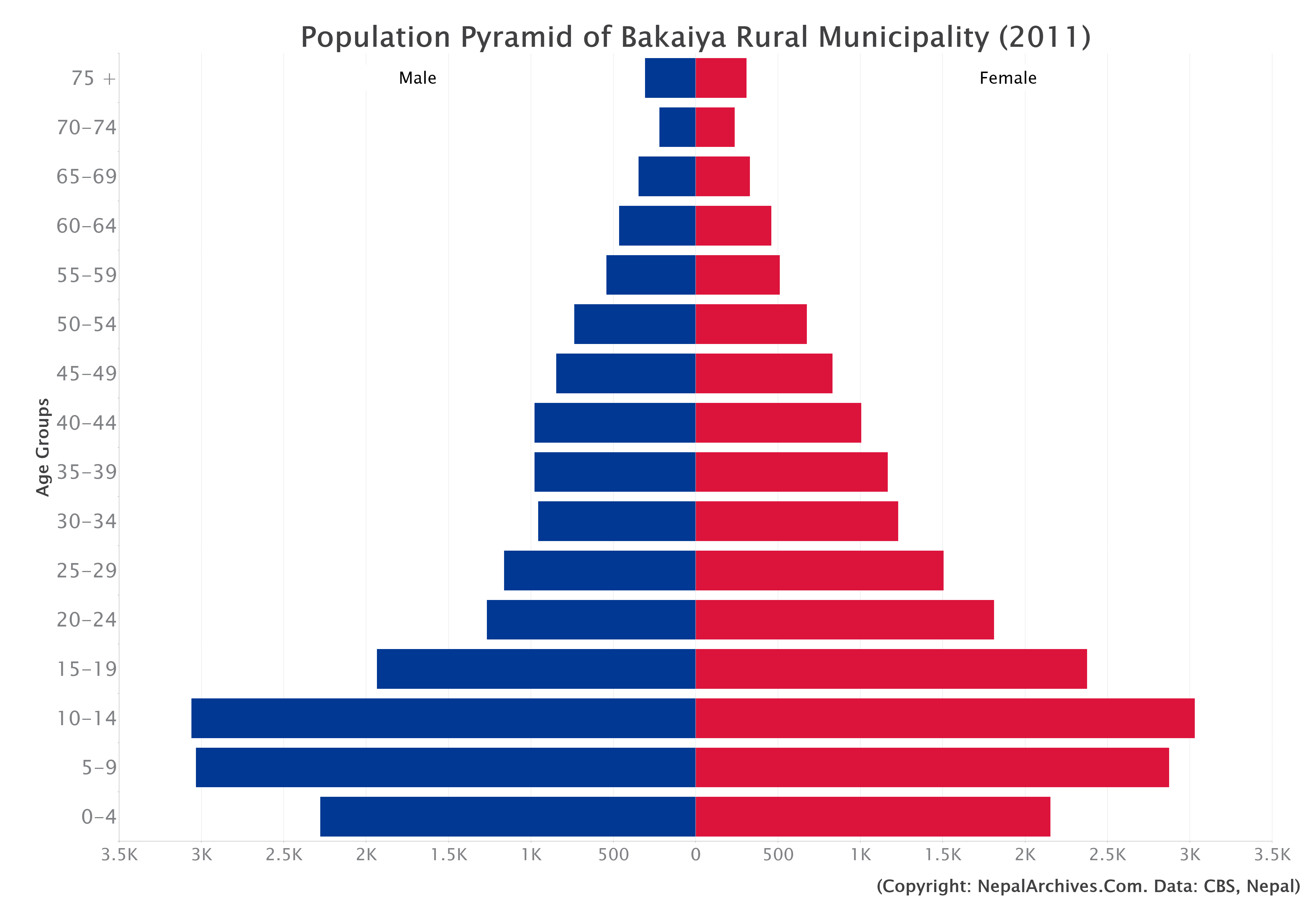
Gender wise, top 5 most age groups male population were between 10 and 14 (3,062), between 5 and 9 (3,035), below 4 (2,279), between 15 and 19 (1,935), and between 20 and 24 (1,268), with total population of 11,579. In contrast, bottom 5 least age group male population were between 70 and 74 (221), above 75 (308), between 65 and 69 (348),between 60 and 64 (466), and between 55 and 59 (542), with total population of 1,885. With regards to female population, top 5 age groups females were between 10 and 14 (3,030), between 5 and 9 (2,873), between 15 and 19 (2,376), below 4 (2,153), and between 20 and 24 (1,810), with total population of 12,242. In contrast, bottom 5 least age group male population were between 70 and 74 (237), above 75 (308), between 65 and 69 (329),between 60 and 64 (458), and between 55 and 59 (510), with total population of 1,842.
The population with age-group 50 to 54 had male to female ratio of 1.09, which states that this age group had maximum males as compared to females. Similarly, age-group 20 to 24 had most female population as compared to male population with male to female ratio of 0.70. The age-groups 50 to 54, below 4, 5 to 9, 55 to 59, 65 to 69, 45 to 49, 60 to 64, 10 to 14 had majority of male population while age-groups 40 to 44, 70 to 74, 35 to 39, 15 to 19, 30 to 34, 25 to 29, 20 to 24 had majority of female population as per male-female ratios. Moreover, age-groups above 75 had eqivalent or almost equal numbers of male and female population with male-female ratios of 1.
The population pyramid for Bakaiya Rural Municipality visually illustrates the male vs. female population based on different age groups. The population data and ratio tables are also available in this link.
Population Ratios
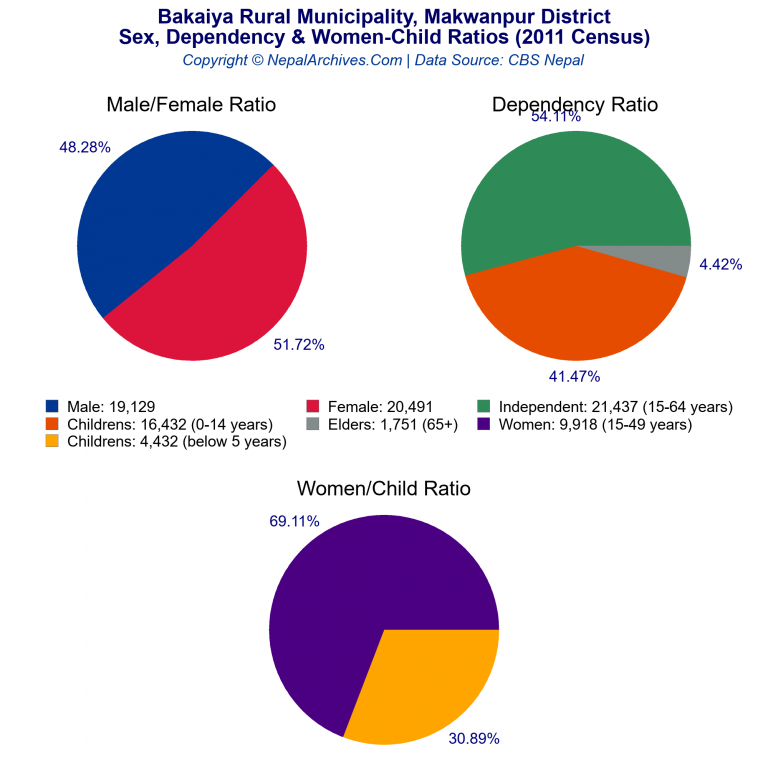
There were 54.11 % (21,437 ) of independent population, the working age people between ages of 15 and 64 years. The dependent children, ages below 15 years, were 41.47 % with total number of 16,432. The dependent elderly population, aged 65 and above were 4.42 % with total number of 1,751. As such, total dependent population including children and elderly people were 45.89 with total number of 18,183
There were 9,918 women of child-bearing age-group of 15 to 49 years. Same as, the todlers or children of 4 years or below were 4,432. The ratio of woman of child-bearing age and the number of todlers state that, approximately 447 children were born per 1,000 women. This number is also roughly used as fertility levels when direct measures of births are not available.
Literacy, Education Levels & Schooling
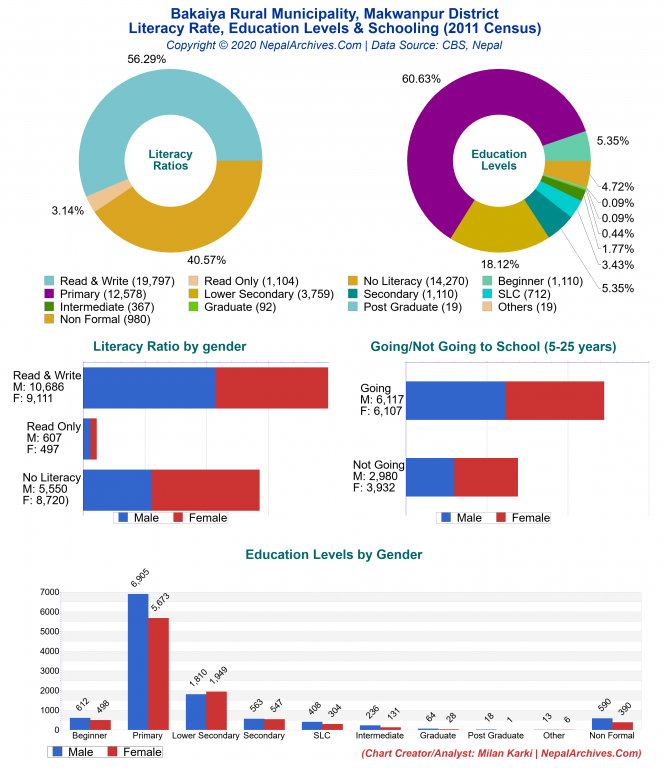
Grade 1-12 Students & Schools
The pie-chart and graphs above further illustrates the students and schools.
Population by Language Spoken
Mostly spoken language in Bakaiya is Tamang, which is spoken by 28,972 people. The Bakaiya has people who speak other languages, such as Nepali, Magar, Bhojpuri, Rai, Maithili, Newar, Gurung, Pahari, etc.
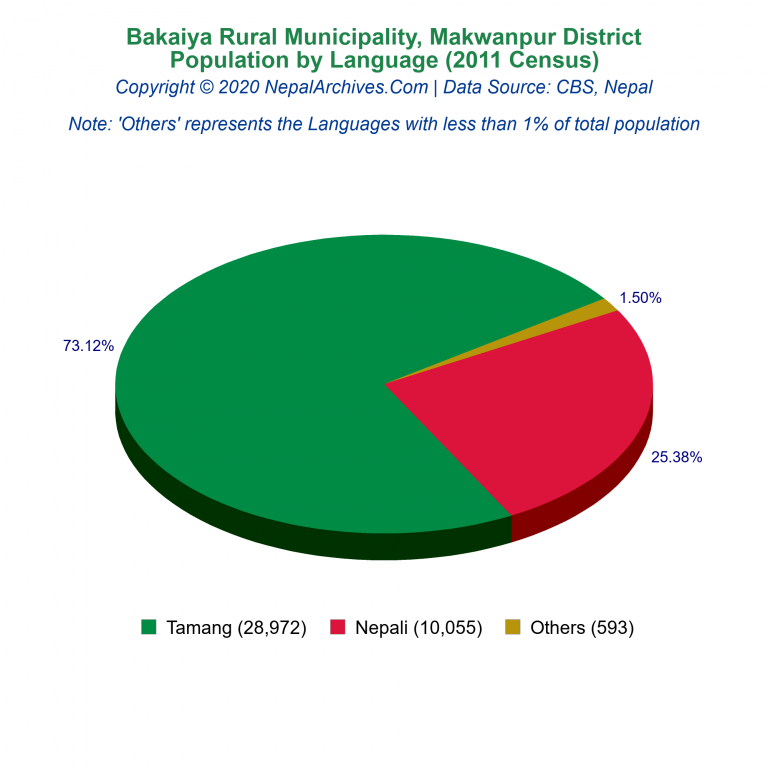 Out of total population, 14,909 female speaks Tamang language, while 14,063 male speaks Tamang language.Details information about languages spoken by male and female groups of population has been illustrated in the table.
Out of total population, 14,909 female speaks Tamang language, while 14,063 male speaks Tamang language.Details information about languages spoken by male and female groups of population has been illustrated in the table.Population by Castes
According to 2011 census conducted by Central Bureau of Statistics (CBS), Bakaiya Rural Municipality was inhabitted by mostly the people of Tamang caste with total population of 29,039. There were as little as Sonar caste with population of as little as 12 in total. People of several other castes who live in Bakaiya are Brahmin - Hill, Chhetri, Majhi, Kami, Rai, Magar, Danuwar, Ghale, Newar, Damai/Dholi, Brahmin - Tarai, Gurung, Dalit Others, Sunuwar, Pahari, Kalwar, Kathbaniyan, Brahmu/Baramo, Yadav, Terai Others, Gharti/Bhujel, Limbu, Sonar, etc. Only the population of castes with above 1,000 population are illustrated in the table.
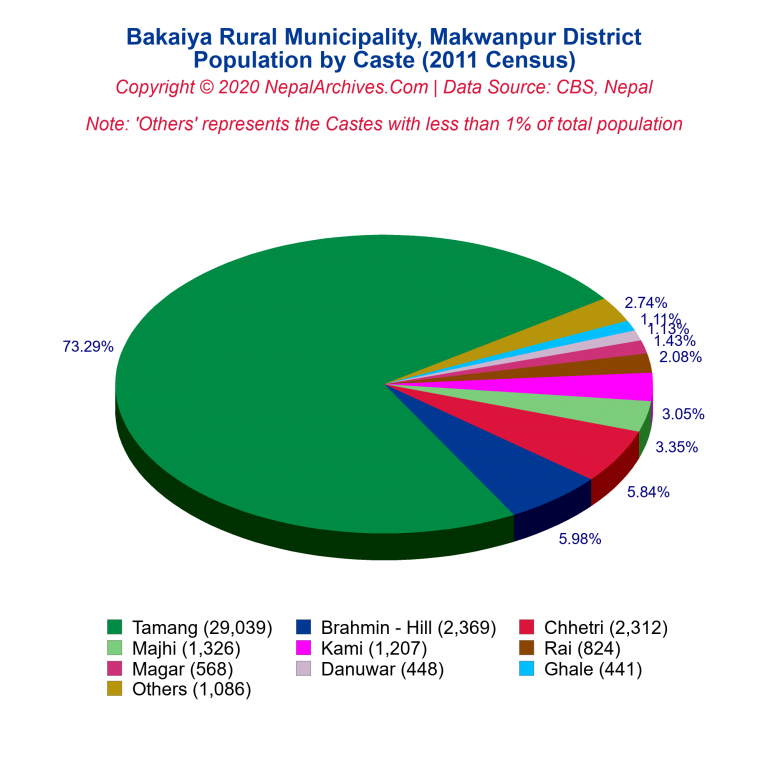 Top five castes of people in Bakaiya Rural Municipality are Tamang (29,039), Brahmin - Hill (2,369), Chhetri (2,312), Majhi (1,326) and Kami (1,207) with total population of 36,253, which forms 91.50 percent out of total population of 39,620 in Bakaiya Rural Municipality.
Top five castes of people in Bakaiya Rural Municipality are Tamang (29,039), Brahmin - Hill (2,369), Chhetri (2,312), Majhi (1,326) and Kami (1,207) with total population of 36,253, which forms 91.50 percent out of total population of 39,620 in Bakaiya Rural Municipality.Population by Disability
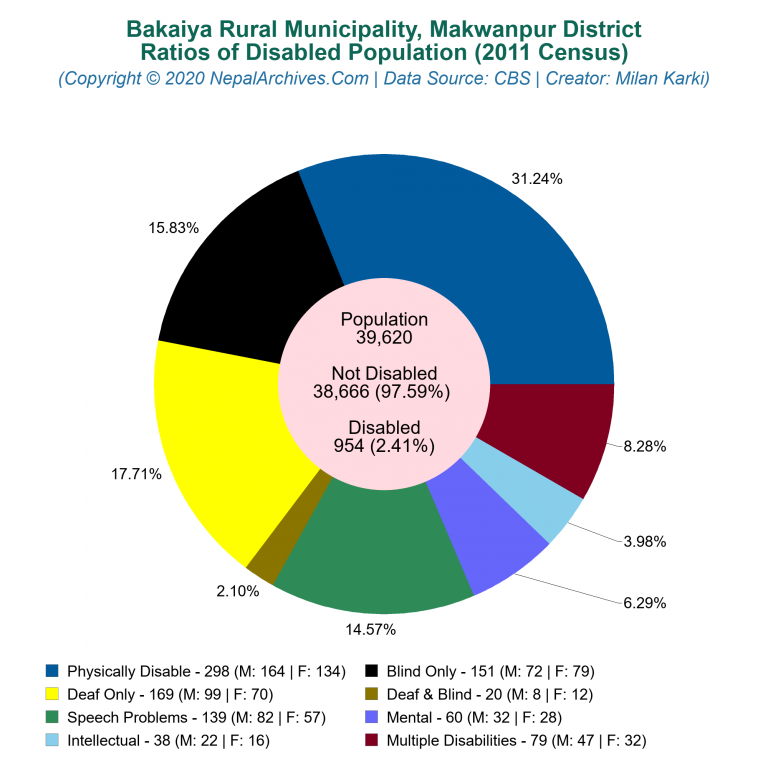
Similarly, there were 151 people who were blind and 169 people were deaf, while 20 people were both blind and deaf. Moreover, 139 persons had reported of having speech problems. Total 79 people had multiple disabilities.
The pie-chart above illustrate the better picture of disabled population along with genderwise ratios.
Household Foundation
With respect to wall of the houses, 3,688 houses were mud bonded, 359 houses were cement bonded, 3,233 houses were wood planks bonded, 183 houses were bamboo bonded and 3 houses had unbaked bricks on their outer walls.Rest of the houses were reported of having other types of outer wall, while some of them reported nothing of having the outer wall bonding.
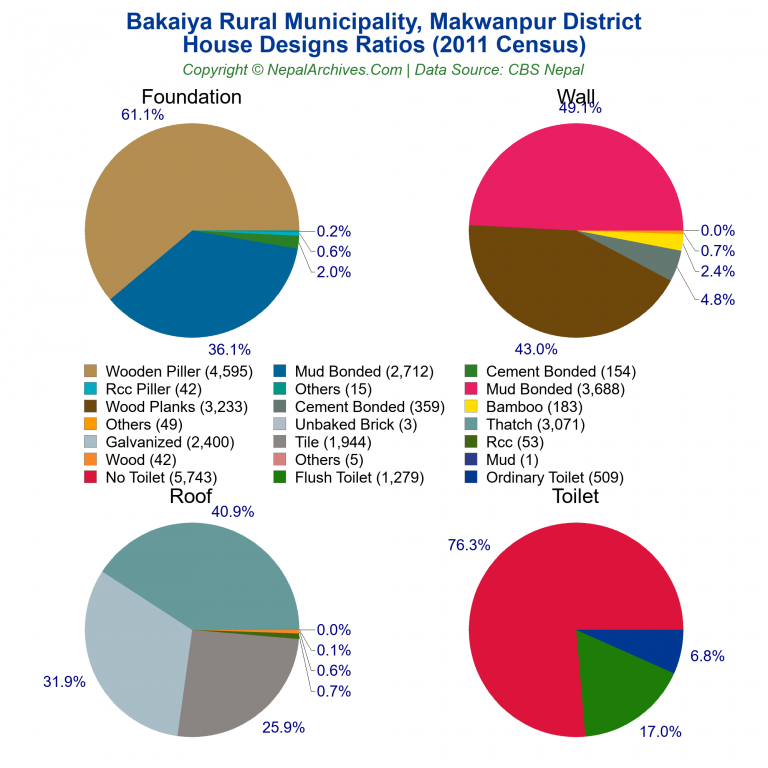
There were several types of house roofs reported. Total 3,071 houses were reported of having thatch roofs while 2,400 houses had galvanized roofs. Similarly, 1,944 houses had roof of tile, 53 houses had RCC roofs, 42 houses had roof of woods while 1 houses were reported having roof of mud. As per 2011 CBS census, some of the houses had other types of roofs while some didn't report about the roof structure.
With respect to the toilets, 5,743 out of 7,538 houses didn't report of having a private toilet for their households. Nevertheless, 1,279 houses were reported of having flush toilet while 509 houses reported having ordinary toilets.
Utilities
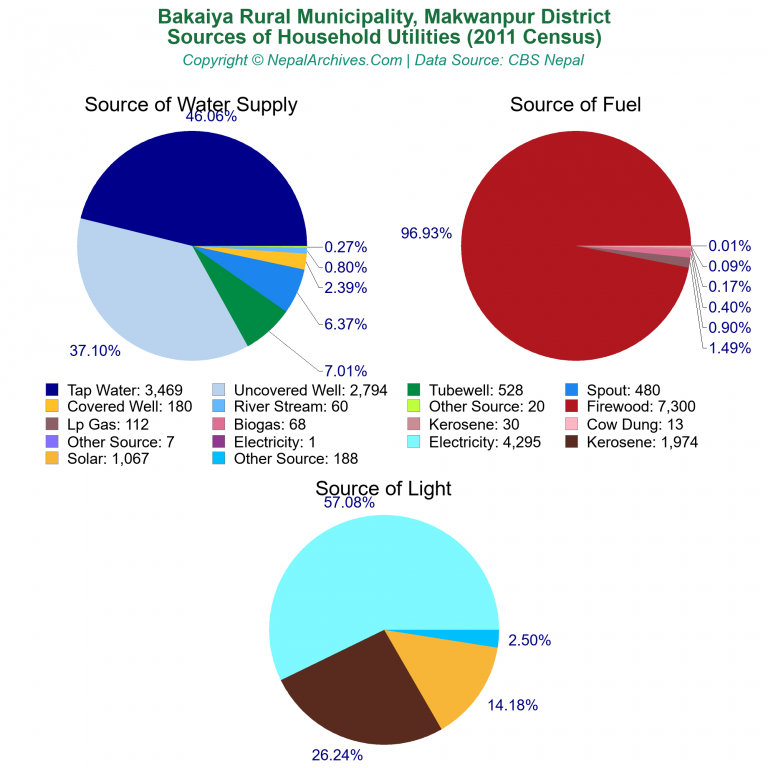
With reference to source of fuel, 7,300 households reported their source of fuel as firewood while 30 households had kerosene as their fuel source. The LP gas was used by 112 households as a source of fuel. Moreover, other sources of fuel were cow dung (13), bio-gas (68), fuel electricity (1), etc.
Same as, total 4,295 households had reported of having electricity as the source of their household's lighting. The households still using kerosene as source of light were 1,974, while 1,067 households used solar energy as source of lights. Total 0 households also reported of using bio-gas as a source of light. The ratio of use of electricity as compared to other source of light was 0.57.
Facilities
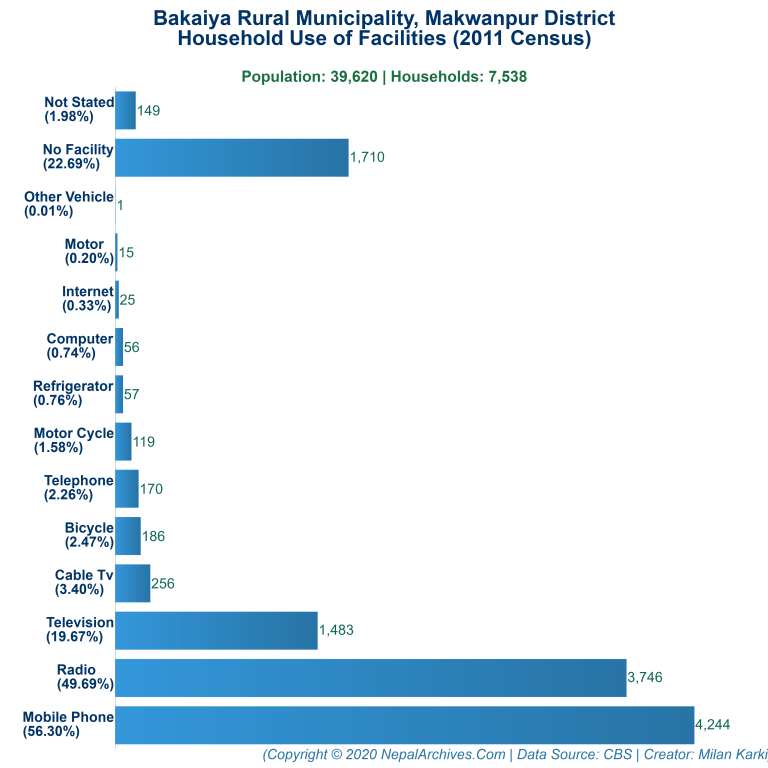
Economic Census
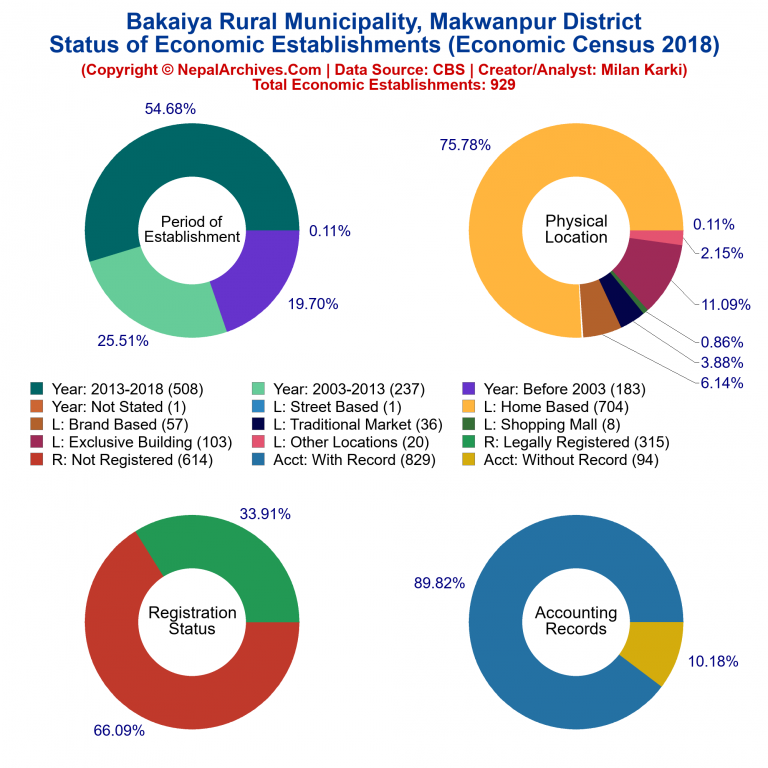 According to 2018 Economic Census, there are total 929 establishments in Bakaiya Rural Municipality that are involved in various economic activities. In those establishments, total 1,903 persons are engaged for the economic activities, as a self-employed or an employee, with total male engagement of 1,067 and female engagement of 836 persons.In every business, there were an average of 2.05 people engaged with average males are 1.15 and females are 0.90. The ratio of male to female engagement in the establishments are 1.28, which means as many as 1.28 males are enagement in the economic activities per female.
According to 2018 Economic Census, there are total 929 establishments in Bakaiya Rural Municipality that are involved in various economic activities. In those establishments, total 1,903 persons are engaged for the economic activities, as a self-employed or an employee, with total male engagement of 1,067 and female engagement of 836 persons.In every business, there were an average of 2.05 people engaged with average males are 1.15 and females are 0.90. The ratio of male to female engagement in the establishments are 1.28, which means as many as 1.28 males are enagement in the economic activities per female.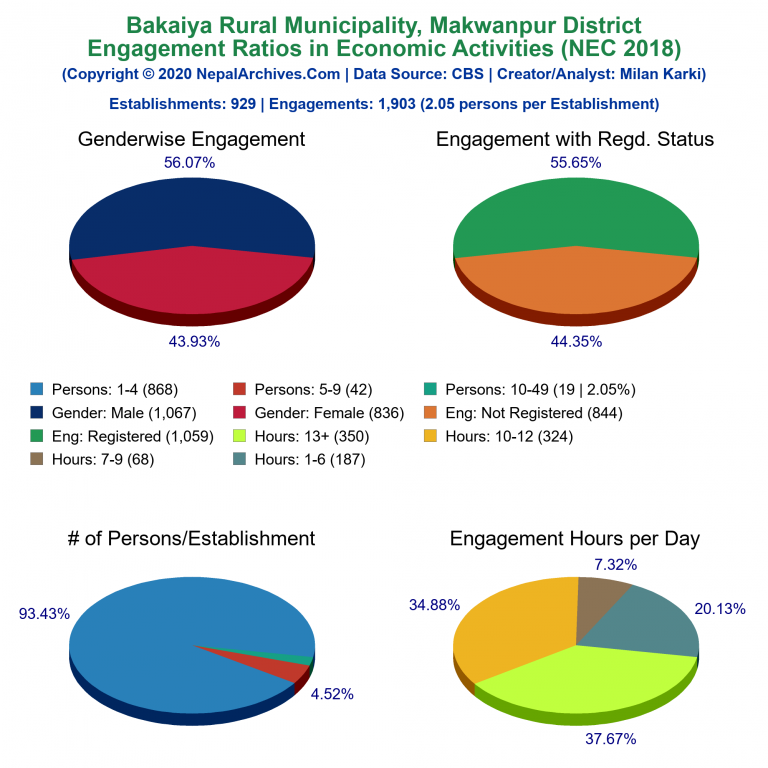 Similarly, the engagement of males were 56.07 percent while the females are 43.93 percent.
Similarly, the engagement of males were 56.07 percent while the females are 43.93 percent.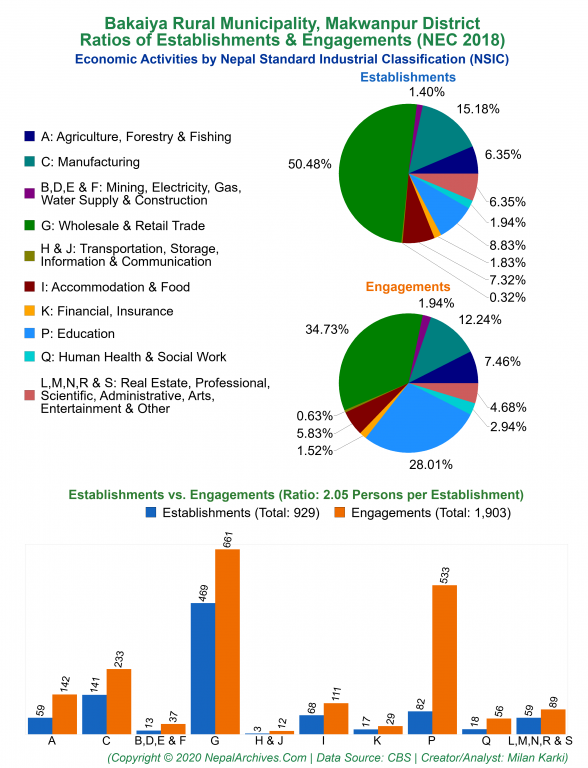
(Desclaimer: The statistical data published about Bakaiya Rural Municipality profile in this page are exclusively obtained from Nepal Government's Central Bureau of Statistics (CBS) as well as other verifiable Nepal Government sources. The profile of Bakaiya Rural Municipality has been published for information and research only, which can be relied based on its primary source. Nevertheless, NepalArchives.Com does not provide any guaranty of the validity of the stastical information in this page. Any question about the statistical validity of information should be directed to Nepal Government Agency. However, if you found any error or inconsistency of information in this page, please kindly let us know so that we will improve this page. Thank you.)
